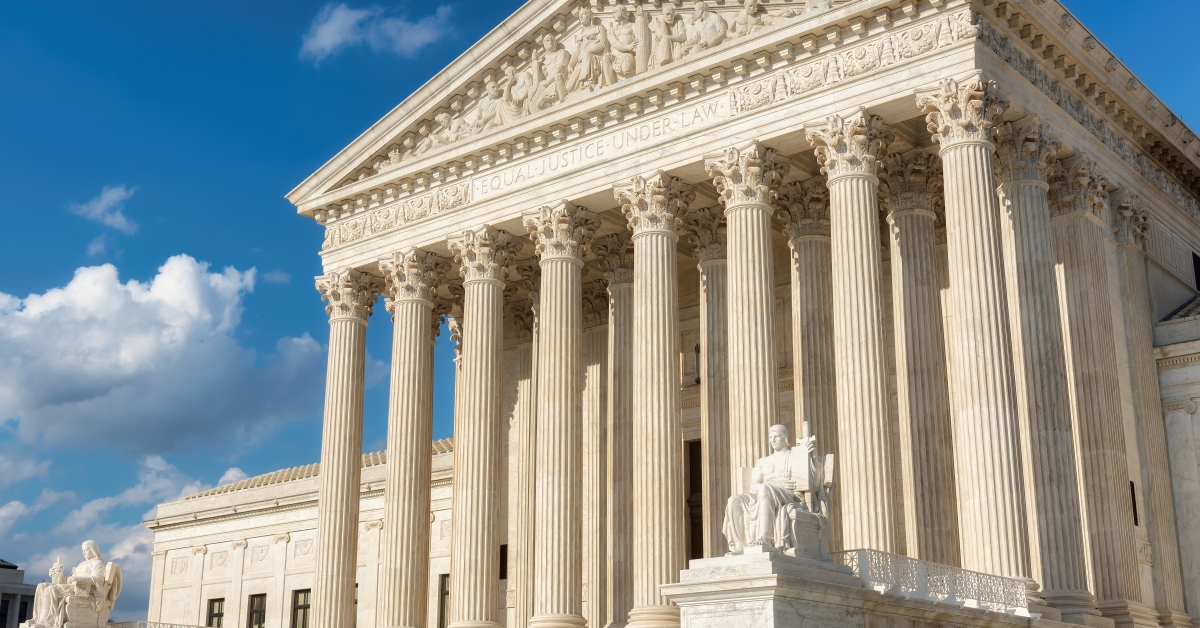
University of Mississippi law professor Chris Green says U.S. v. Rahimi implications go farther than single decision
The issue of gun ownership will come before the Supreme Court of the United States again on Tuesday, November 7, 2023, this time with the justices deciding whether a person who has a restraining order against them can legally keep their guns.
U.S. v. Rahimi is just one of many cases testing the constitutionality of gun regulation following a 2022 Supreme Court ruling that changed the way the government views laws, said Chris Green, UM law professor and Jamie L. Whitten Chair in Law and Government.
Were the Supreme Court to back the lower courts and support Rahimi’s case, categorical federal disarmament based only on the existence of a restraining order could no longer be enforced, he said.
However, the question is not just whether the Supreme Court will rule in favor of Rahimi, but rather, by what basis does the court decide a law is constitutional, Green said.
In U.S. v. Rahimi, the Supreme Court will hear the case of Zackey Rahimi, a Texas resident who had a restraining order filed against him in 2020. U.S. Code 922(g)(8) forbids any person subject to a court order that restrains them from harassing, stalking or threatening an intimate partner or child from receiving, possessing or transporting a firearm or ammunition.
Rahimi argued, in a case that has drawn lobbyists and advocacy groups on both sides of the gun debate, that 922(g)(8) violates his Second Amendment rights, and, on Feb. 2, the 5th U.S. Circuit Court of Appeals agreed.
The court – which covers Louisiana, Mississippi, Texas and the Canal Zone – voted to overturn U.S.C. 922(g)(8) on the basis that the statute is unconstitutional. This could pave the way for legalizing persons such as Rahimi to possess firearms.
“Essentially what that provision from 922(g) does is the federal government comes in and is telling states – the ones who are dealing with these restraining orders – ‘You are required, if you enter a restraining order like this, to disarm someone,'” Green said.
“So, the question in Rahimi is whether the federal government is going to come in and categorically back up the states on this issue.”
Questions like these – on the constitutionality of gun ownership restrictions – have risen to the surface again after the New York Rifle and Pistol Association, Inc. v. Bruen case in 2022, he said.
In Bruen, the Supreme Court ruled that New York’s law strictly regulating who may carry a firearm is unconstitutional and violates the Second and 14th amendments.
“Between 2008 and ’22, after District of Columbia v. Heller, all the lower courts had said, ‘We have this legal idea of intermediate scrutiny that we’re going to rely on for gun regulations,'” Green said. “Bruen said that’s not what we’re doing; we’re looking at traditions to see if there is a tradition of gun regulation.”
The burden is now on the courts to prove that a gun law has sufficient “tradition of gun regulation,” he said. Where exactly that tradition must begin is unclear, however.
“Bruen kicks off a huge amount of litigation in the district courts and courts of appeals essentially asking which of these nine categories from 922(g) of federal disarmament are actually supported by a relevant tradition,” he said.
“Because Bruen announces a new standard for Second Amendment claims, there’s been a slew of new litigation, and the federal government has had to dig into tradition.”
Three primary contenders exist for when this tradition must begin, Green said. They are:
- 1791, the year the Second Amendment was passed
- 1868, the year the 14th Amendment was enacted
- traditions starting in the modern era.
It’s unclear what the Supreme Court will decide when it hears U.S. v. Rahimi, he said.
The justices could choose to refer to the tradition – or lack thereof – of more than 200 years ago. They could decide that they do not have enough information to make a decision – which could delay the case or force the court to admit that it does not have the right to enforce 922(g)(8).
Regardless of choice, the justices will be deciding the precedent on which future disarmament cases will be judged, Green said.
“This is part of having a constitution written in less than unmistakable terms,” he said. “We write our constitutional amendments in particular points in time and they have meaning in particular points in time.”
By Clara Turnage




